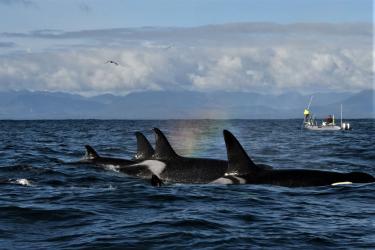Welcome to Sea Turtle Week 2023! This week-long celebration centers around World Sea Turtle Day, which is recognized each year on June 16. This year’s observance is particularly important as we commemorate the 50th anniversary of the Endangered Species Act. This landmark legislation protects more than 160 marine and anadromous species, including sea turtles, and has been overwhelmingly successful in preventing their extinction during the last 50 years. The Act has also put many species on the path to recovery.
Conserving Endangered and Threatened Sea Turtles
All six species of sea turtles that inhabit U.S. waters are listed under the Endangered Species Act—loggerhead, green, Kemp’s ridley, leatherback, hawksbill, and olive ridley sea turtles.
NOAA Fisheries leads the conservation and recovery of sea turtles in the marine environment including areas for resting, feeding, migrating, and access to nesting sites. We use a variety of innovative techniques to study, protect, and recover sea turtles. Engaging and collaborating with our partners, we develop recovery plans and implement programs that foster the conservation and recovery of sea turtles and their habitats. While much remains to be done, NOAA Fisheries with our partners have made significant steps towards recovering and conserving sea turtles. The recovery of green sea turtles in Hawai‘i is one example of how our conservation efforts are making a real difference.
Green Sea Turtle Conservation in Hawai‘i
Green turtles are found worldwide, with 11 distinct population segments listed under the Endangered Species Act. The Hawaiian green sea turtle (honu) population was seriously depleted due to overharvesting during the 1950s–early 1970s. The State of Hawaiʻi protected the species in 1974, and NOAA listed it as threatened under the Endangered Species Act in 1978.
Honu primarily nest at a highly remote atoll called Lalo (or French Frigate Shoals) in the Papahānaumokuākea Marine National Monument. This nesting site has been monitored by NOAA and our partners for 50 years, and the population has been steadily increasing for four decades. This recovery is a result of collaborative conservation efforts and protection under state law and the Endangered Species Act. However, honu still face threats related to climate change, nesting habitat loss, and other human induced threats.
In 2018, Hurricane Walaka struck Lalo and greatly reduced the size of East Island, the primary nesting site for this population. NOAA scientists continue to monitor honu nesting at Lalo and are investigating their resilience in the face of climate change. Reducing non-natural threats will be key to the population’s ability to recover. These threats include:
- Human alterations to nesting habitat (for example, deteriorating infrastructure at Lalo and beach lighting in the main Hawaiian Islands)
- Marine debris
- Fishing gear interactions
- Vessel strikes
- Fibropapilloma (tumor-causing) disease
Climate Change Threats to Sea Turtles
Climate change has a significant impact on marine habitats and species. All sea turtle species face several threats from warming conditions, sea level rise, and eroding beach habitats.
Warming Conditions
The temperature of beach sand during egg incubation determines the sex of the offspring. Warmer temperatures increase the number of females. A shortage of male sea turtles may lead to decreased genetic diversity and threaten species survival.
Changes in the marine environment can also alter predator territory. With warming oceans, predators like sharks and killer whales can shift into historically cooler waters.
Sea Level Rise
Rising seas, especially combined with increasing frequency and severity of storm events, threaten sea turtle survival by flooding nests or washing away beach nesting sites.
As climate change makes sea turtle recovery more challenging, the Endangered Species Act provides an important conservation framework.
What You Can Do To Save Sea Turtles
In addition to climate change, some of the biggest threats to sea turtles are directly from human activities. You can do your part to help conserve sea turtles by being conscious when making choices in and around the water. Here’s how you can protect sea turtles:
Slow Down and Look Out
Sea turtles surface to breathe and linger on the surface while breathing. Larger turtles — subadults and adults—have slower reflexes and may have a hard time responding to quick-moving boats and jet skis. When boating near coral reef habitats or near harbors and boat ramps, lower your speed to 10 knots or less, and keep an eye out for sea turtles.
Retrieve and Recycle Fishing Gear or Plastic Marine Debris
Keep a close eye on your gear while fishing, especially in areas where turtles are present. Hooks, lines, or nets left in the water can entangle and kill sea turtles. If you lose your gear while fishing or find abandoned gear (or plastic debris), pull it out of the water safely and dispose of it properly. Gear and plastics in the water or tangled up on reefs can catch, injure, or drown a sea turtle.
Keep Your Snacks to Yourself
Sea turtles can eat algae, seagrass, and jellyfish. However, they can become accustomed to being fed and can develop an unnatural taste for fish or squid. This makes them more likely to take a baited hook, increasing the risk of hooking or entanglement.
Report Turtles In Distress
If you see a sick or injured sea turtle, do not try to help the sea turtle on your own. Contact your local sea turtle stranding network instead. Reporting a sick, injured, entangled, stranded, or dead animal is the best way to make sure professional responders and scientists know about it and can take appropriate action.






